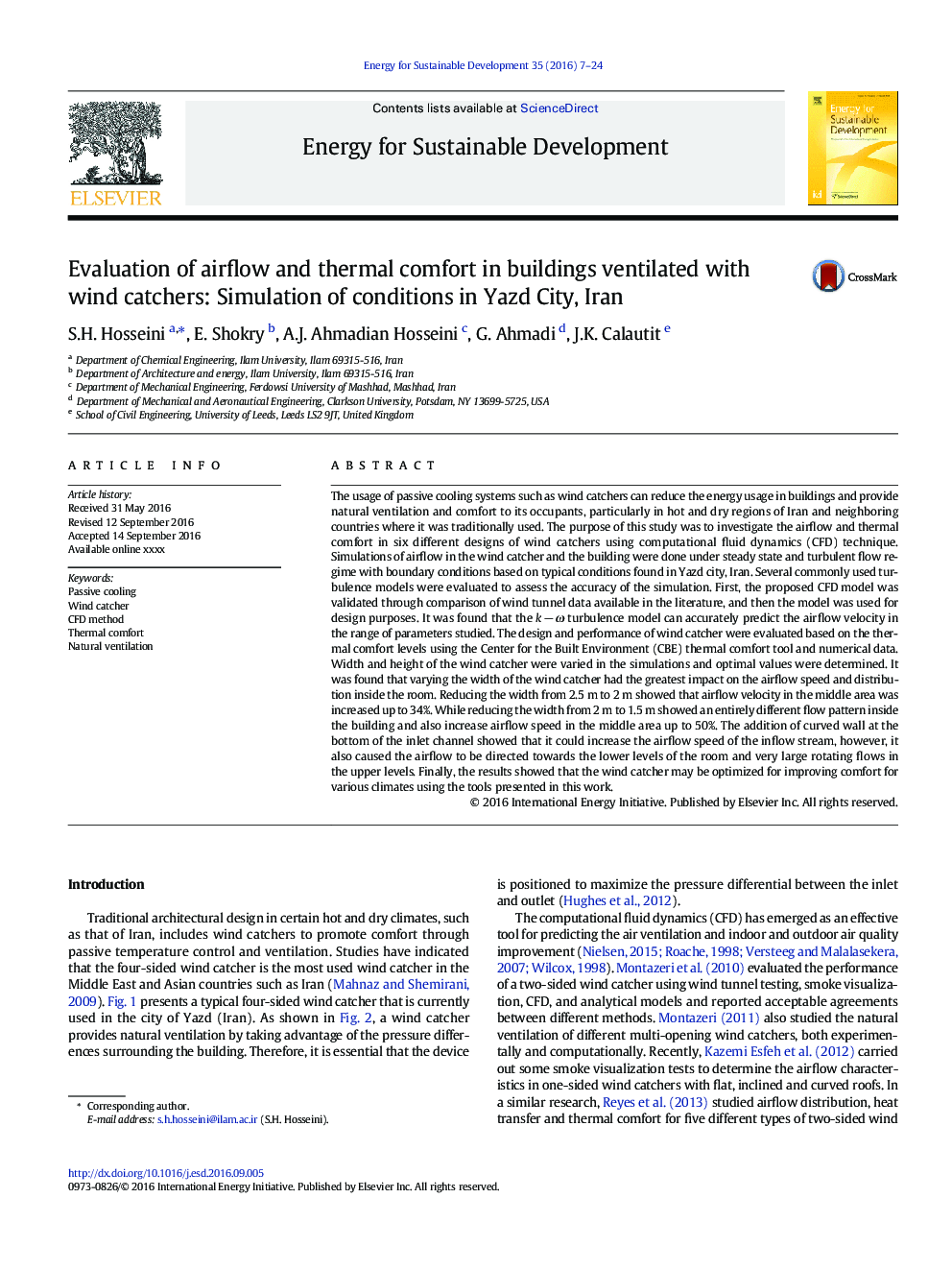| کد مقاله | کد نشریه | سال انتشار | مقاله انگلیسی | نسخه تمام متن |
|---|---|---|---|---|
| 5114343 | 1484395 | 2016 | 18 صفحه PDF | دانلود رایگان |
عنوان انگلیسی مقاله ISI
Evaluation of airflow and thermal comfort in buildings ventilated with wind catchers: Simulation of conditions in Yazd City, Iran
ترجمه فارسی عنوان
بررسی جریان هوا و راحتی حرارتی در ساختمان های تهویه شده با بادگیران: شبیه سازی شرایط در شهر یزد، ایران
دانلود مقاله + سفارش ترجمه
دانلود مقاله ISI انگلیسی
رایگان برای ایرانیان
کلمات کلیدی
موضوعات مرتبط
مهندسی و علوم پایه
مهندسی انرژی
انرژی (عمومی)
چکیده انگلیسی
The usage of passive cooling systems such as wind catchers can reduce the energy usage in buildings and provide natural ventilation and comfort to its occupants, particularly in hot and dry regions of Iran and neighboring countries where it was traditionally used. The purpose of this study was to investigate the airflow and thermal comfort in six different designs of wind catchers using computational fluid dynamics (CFD) technique. Simulations of airflow in the wind catcher and the building were done under steady state and turbulent flow regime with boundary conditions based on typical conditions found in Yazd city, Iran. Several commonly used turbulence models were evaluated to assess the accuracy of the simulation. First, the proposed CFD model was validated through comparison of wind tunnel data available in the literature, and then the model was used for design purposes. It was found that the k âÂ Ï turbulence model can accurately predict the airflow velocity in the range of parameters studied. The design and performance of wind catcher were evaluated based on the thermal comfort levels using the Center for the Built Environment (CBE) thermal comfort tool and numerical data. Width and height of the wind catcher were varied in the simulations and optimal values were determined. It was found that varying the width of the wind catcher had the greatest impact on the airflow speed and distribution inside the room. Reducing the width from 2.5 m to 2 m showed that airflow velocity in the middle area was increased up to 34%. While reducing the width from 2 m to 1.5 m showed an entirely different flow pattern inside the building and also increase airflow speed in the middle area up to 50%. The addition of curved wall at the bottom of the inlet channel showed that it could increase the airflow speed of the inflow stream, however, it also caused the airflow to be directed towards the lower levels of the room and very large rotating flows in the upper levels. Finally, the results showed that the wind catcher may be optimized for improving comfort for various climates using the tools presented in this work.
ناشر
Database: Elsevier - ScienceDirect (ساینس دایرکت)
Journal: Energy for Sustainable Development - Volume 35, December 2016, Pages 7-24
Journal: Energy for Sustainable Development - Volume 35, December 2016, Pages 7-24
نویسندگان
S.H. Hosseini, E. Shokry, A.J. Ahmadian Hosseini, G. Ahmadi, J.K. Calautit,
